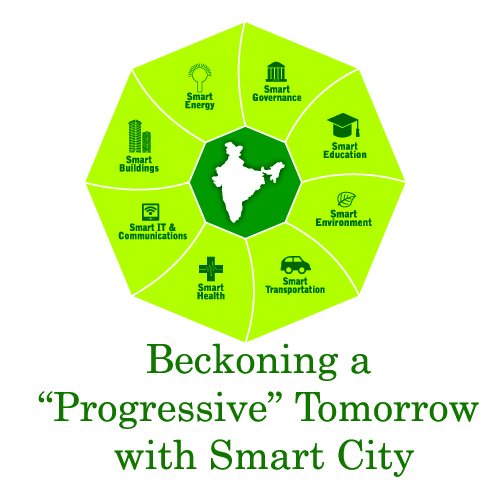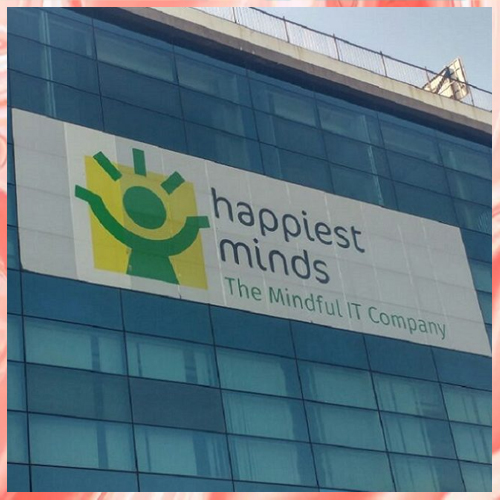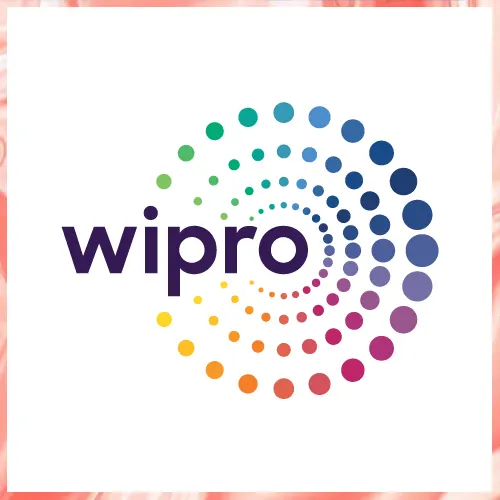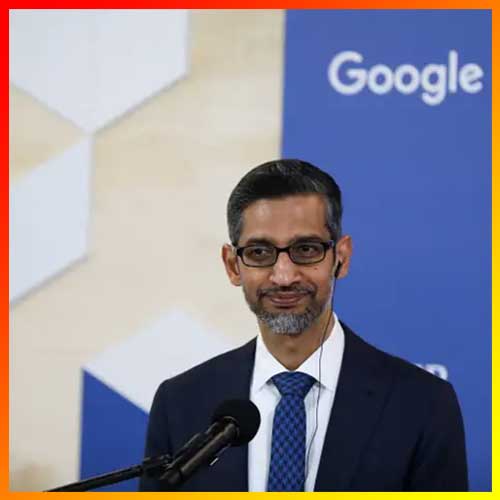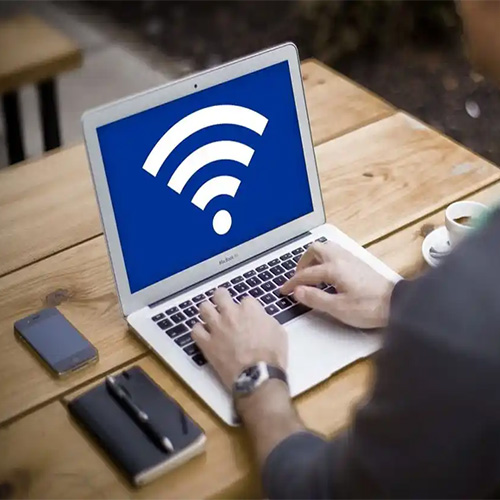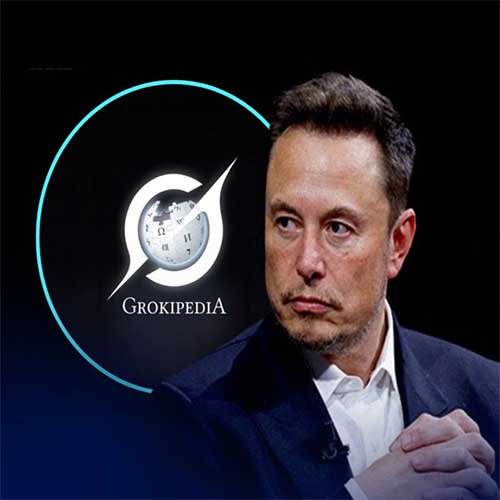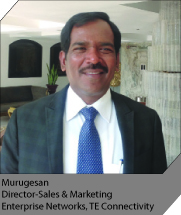
With the unveiling of the ambitious plan of building 100 Smart Cities already spelling a big opportunity for both IT and telecom vendors and spurring a great amount of business interests, what remains to be seen is how the vision is going to be realized with the adoption of the right business model and with necessary regulatory policies in place. A look at how different vendors view this opportunity as –
A “smart city” is an urban region that is highly advanced in terms of infrastructure, sustainable real estate, communications as well as market viability. It is one which focusses on high-quality knowledge, communication and social infrastructure. In a smart city, information technology is the principal infrastructure and is the basis for providing essential services to citizens. The essence of smart cities is, thus, to ensure how citizens can essentially improve every aspect of their daily living – governance, healthcare, retail, finance and work with the help of technology. Many leading nations across the globe have integrated technology in their growth strategy and have taken up several initiatives in this regard. Noteworthy amongst them are the smart cities initiatives in Singapore, United States and EU countries – Vienna, Toronto, Paris, New York, London, Tokyo, Berlin, Copenhagen, Hong King and Barcelona. India isn’t far behind as the country is gradually realizing the true potential of developing smart cities, with the Government of India announcing initiation of projects in 34 smart cities across 7 states. To this extent, the Ministry of Urban Development has unveiled “Concept Note on Smart Cities”, giving broad contours about smart cities and their related aspects like financing and selection criteria. The smart city project opens up a huge opportunity in each aspect of smart city planning, project execution and management. Though at present the government has allocated Rs.7,060 crore (approx. $1.2 billion) in the current year, the overall investment needed for building smart cities will be much larger.
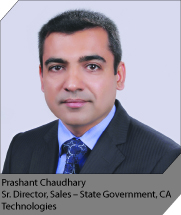 |
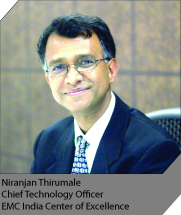 |
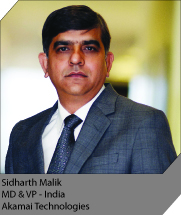 |
“It is clear that we live in a world where billions of people and devices are increasingly interconnected with each other, which we call the hyper-connected world. The Internet at the heart of this hyper-connected world plays an important role in making these connections. The Indian Government’s move to create smart cities as one of the key initiatives under an overall umbrella puts emphasis on the digital medium to interact with and provide services to its citizens,” reiterates Sidharth Malik, Managing Director & Vice-President, India, Akamai Technologies. There are many technological platforms involved in realizing a smart city but not limited to automated sensor networks and data centers alone. “Though this may sound futuristic, it is now likely to become a reality as the ‘smart cities’ movement unfolds in India under the guidance of the newly-elected government. Every service in a city, ranging from energy management, pollution controlling, traffic monitoring, parking area monitoring, etc depends on network and communication services. The IT infrastructure in a smart city, therefore, is required to be evaluated and monitored through a controlled data center that can distribute, allocate as well as track utilization of resources,” remarks Prashant Chaudhary, Sr Director, Sales – State Government, CA Technologies.
 |
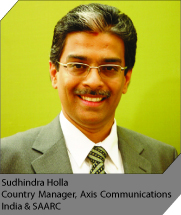 |
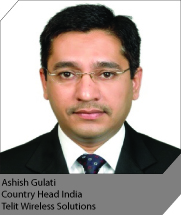 |
In today’s world, consumers are increasingly connected when they are on the move and expect to be able to access information and services anywhere. Ambarish Deshpande, Managing Director, Blue Coat Systems – India, states his view on this, “Basically, a smart city is nothing but allowing people to get more connected and work from anywhere they want to. I think it is the initiative that is going to bring in connectivity and eventually you are going to have all the cities connected to each other through some mechanism. There is a huge amount of infrastructure that is required, to start with. For instance, with connectivity and the entire city being Wi-Fi connected, you can access the internet continuously on the move. It is there today to some extent, but you are probably experiencing it in a fragmented manner but tomorrow it will be more in a consolidated way.” However, a city has to be safe in order to be smart. Video surveillance can play a big role in improving the lives of the people and enable the city to transform into a safe and a smart city. Cameras can be installed across the city to track traffic and for monitoring important locations. These cameras can be controlled via a centralized network and get alerts on any untoward incidents and accidents. “In the long term, video surveillance systems can be used to collect sophisticated information including motion detection and smart analytics and receive automated alerts. This kind of an advanced system will enable authorities to take the right measures when required and equip them to prevent criminal activities,” says Sudhindra Holla, Country Manager, Axis Communications India & SAARC. Axis Communications is well equipped to grow in this changing environment. The company has already provided surveillance solutions to Junagadh which is helping the city police to have a better command on the city. The Superintendent of Police (SP) of Junagadh was looking for a video surveillance solution for the city for two primary reasons – first to keep a watch on terrorist and anti-social activities in the city and secondly to assist the police departments as a proactive tool to detect and deter criminal elements. The surveillance solutions were installed at eight different locations spread all over the city of Junagadh. Niranjan Thirumale, Chief Technology Officer, EMC India Center of Excellence, underlines the fact that data is central to governance and smart city architecture. “Being able to handle the explosion in data from sensors and other data capture mechanisms, storing, managing, and securing the data will become the key aspects of a Smart City. In the end, the smartness of a Smart City will depend on how we are able to create value out of the data and use it for intelligent, automated decision-making.”
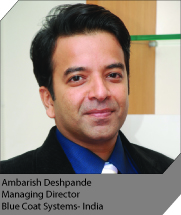 |
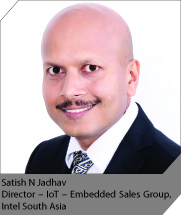 |
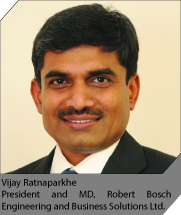 |
Putting across his views on how it is important for a Smart city to become resilient, Purushottam Kaushik, MD – Sales, Cisco says, “We need to define the time period in which a smart city needs to be built and accordingly the business model will evolve. Secondly, none of the factors like resilience or smart will work unless there is an integrated view. So an integrated approach is what is necessary if we wish to get some productive results and fill in the gaps wherever they occur. Third is sustainability. We have around 45 odd solutions and have deployed it in smart cities like Barcelona, Chicago etc. But the real challenge will arise when we talk about the Indian setting, because if we try deploying any of these 3 solutions here, none will work. We need to think how they will work at an affordable rate here and adapt them to the Indian environment."
Vendors upbeat about Smart City opportunities... With Smart City solutions and the foundation of a Smart City laid, life is envisioned to be quicker, efficient and effective and citizens would witness a change with diverse initiatives for transportation, energy, water and public safety. It would benefit the workforce, citizens and the environment alike. The focus is on Digital intelligence which is the key to making life safer and more efficient. Additionally, there would be more benefits when objects become more intelligent for understanding complexity and respond to it swiftly. As a market, smart city technologies will encompass an incredible diversity of customers, suppliers, technologies and requirements. Sarvesh Mishra, AGM – Marketing, PTNO, Schneider Electric India, observes, “The Government’s decision to earmark Rs.7,060 crore for smart cities development is definitely going to attract FDI from global multinationals and create a competitive landscape that shall boost the country’s long-term potential economic growth rate.” As far as Schneider is concerned, it has recently launched the FTTH (Fibre to the Home) solution and is extremely upbeat about it, and because of the numerous advantages it brings on to the table, Schneider believes that it is the future of cabling in India. 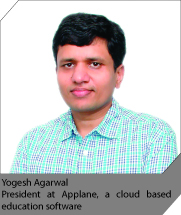 |
 |
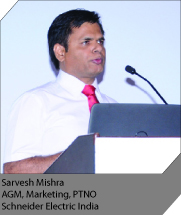 |
According to Murugesan, Director – Sales & Marketing, Enterprise Networks, TE Connectivity, “The new Government’s initiative has boosted the morale of vendors across the IT, telecom, cabling, networking, and enterprise sectors which are deeply interested in creating smarter cities and developing infrastructure corridors.” “With our successful track record of TOSP solutions for FTTH systems, we are well placed in the upcoming smart city boom. Fiber to the Home concept is all set to meet Indian subscribers’ inexhaustible requirement of bandwidth-hungry applications, thus changing our way of life,” he adds. Shailesh Bhayade, Vice-President – Structured Cabling, D-Link (India) Ltd, feels that with the rise in Smart City development and initiative, there are going to be immense business opportunities. “As an organization with vast experience in the networking domain, we certainly look forward to contributing to the nation-building process with our innovative structured cabling solution offerings. D-Link’s product portfolio continues to contribute to the infrastructure development of enterprise and other organizations alike,” he said.
 |
The main focus in smart cities will be to use technology to solve many of the problems that the current urban cities are facing. These include providing real-time information to citizens in terms of traffic congestion, ensuring optimum utilization of water and efficient energy consumption through smart grids, automated sewage disposal in an environmentally friendly manner and sharing infrastructure investments within the community to optimize costs, etc. “These aims can be achieved by a combination of meters, sensors, cameras and various other artificial intelligent systems. Our main focus is to work towards achieving this by functioning closely with various state governments,” says Prashant. From an Intel perspective a smart city is where IT is the principal infrastructure and the basis for providing essential services to residents. “We need to work to identify requirements for open interoperability and standards that define common architectures to connect smart devices, machines, people, processes and data. Smart city begins with putting technology into simple devices, because 80% of the current infrastructure are legacy products or devices. Simply put, all those regular day-to-day things that you see around starting from lamp posts need to be made better by being made smarter and more connected. In the near future, living a seamlessly connected lifestyle isn't as far off as you would think. In line with this vision, Intel would also be focussing on smart homes, safer driving and sustainable living,” remarks Satish N. Jadhav, Director – IoT – Embedded Sales Group, Intel South Asia. Says Ashish Gulati Country, Head – India, Telit Wireless Solutions, “IoT is the key focus area in Smart Cities, enabling the city infrastructure intelligence. IoT, along with M2M solutions, can introduce a variety of efficiencies to city management by improving competitiveness and enhancing quality of life. With a positive move by the government, M2M technologies will be vital in not only transforming the standards of healthcare and urban living, but will also ensure that IoT becomes a reality in India.” Yogesh Agarwal, President, Applane, a cloud-based education software, believes that facilitating education system in the country can go a long way to achieve its goal of a digitalized economy. As Applane helps educational institutes to become smarter, tech-savvy, efficient and productive, it sees a great sync between the intentions of Applane and Modi’s smart city project. “Our market strategy is to focus on K12 institutions and group of institutions. We also take this opportunity to serve back the society and contribute towards a better India, specifically, a better educational ecosystem within the country.” Robert Bosch Engineering and Business Solutions (RBEI) is working with governments in developing innovative solutions and infrastructure that benefit communities that it operates in. “Recently, RBEI had provided a solution for the Bangalore Metropolitan Transport Corporation (BMTC) and Center for Railway Information System (CRIS) where technology was utilized to provide better services,” explains Vijay Ratnaparkhe, President & Managing Director, Robert Bosch Engineering and Business Solutions Ltd.
Opportunities galore ahead… Tata Communications has recently conducted an online survey that was aimed at capturing the behavioural, technical and philosophical responses with regard to the Internet, where close-to 33 per cent of the respondents were from Asia (India and Singapore). When asked what will be the most inspirational opportunity Internet will facilitate in 3–5 years, 27% of the Indian respondents chose that the internet will facilitate smart cities in the next 3–5 years, followed by light speed connectivity, mass adoption of wearable tech, real-life video communications and automated products. For majority of the young adults (25-35 years), the enablement of smart cities was a key opportunity and almost 43% of them felt that it would be the change internet will facilitate in the next 3–5 years. The time is, indeed, right for India to plan the development of Smart Cities. The IT technologies that are required – Mobile, Internet of Things, Cloud and Big Data Analytics – are rapidly becoming mainstream. It is now clear that without ICT a smart city cannot function properly and at the same time there is also a constant need for monitoring the IT infrastructure installed in a smart city. This Big Vision will take city living to a new level where 24/7 utility services will become an essential in public service delivery. This indeed indicates a new dawn for the nation. samrita@varindia.com
See What’s Next in Tech With the Fast Forward Newsletter
Tweets From @varindiamag
Nothing to see here - yet
When they Tweet, their Tweets will show up here.




